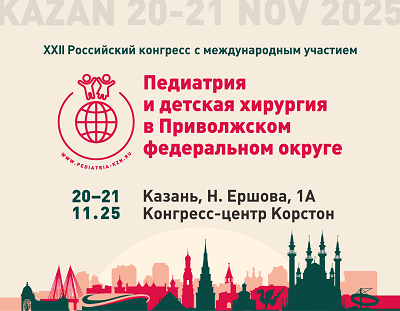Gut microbiota in chronic liver diseases in children
https://doi.org/10.21508/1027-4065-2023-68-2-69-73
Abstract
The impact of gut microbiota on the development of various diseases is of great interest to researchers. However, data on the taxonomic diversity of the intestinal microbiota in chronic liver diseases in children are lacking.
Purpose. To study the taxonomic diversity of the fecal microbiota in children with chronic liver diseases in comparison with healthy patients.
Material and methods. A metagenomic analysis of the intestinal microbiota of 24 children with chronic liver diseases (mean age 10.3 ± 4.7 years) was carried out with the isolation of the target fragment of the 16S rRNA gene. The group included 18 children with autoimmune liver diseases and 6 children with non-autoimmune liver diseases. The comparison group consisted of fecal samples of 34 apparently healthy children.
Results. The conducted study revealed 684 types of microorganisms in the studied samples of patients’ feces. An analysis of the conducted studies showed that fecal samples of healthy children and patients with chronic liver diseases differ in bacterial diversity. The dominant taxa in healthy children were Neisseria flavescens, in patients with chronic liver diseases, the dominant taxa were Bifidobacterium longum, Bifidobacterium adolescentis, Blautia massiliensis. At the same time, Bifidobacterium longum, Bifidobacterium adolescentis, Blautia massiliensis in fecal samples of patients with chronic liver diseases was 8 times as high.
Conclusion. Studies have shown differences in the composition of the intestinal microbiota in healthy children and children with chronic liver diseases.
About the Authors
G. V. VolynetsRussian Federation
Moscow
A. V. Nikitin
Russian Federation
Moscow
T. A. Skvortsova
Russian Federation
Moscow
A. S. Potapov
Russian Federation
Moscow
V. V. Dudurich
Russian Federation
Saint Petersburg
L. G. Danilov
Russian Federation
Saint Petersburg
References
1. Xu X.R., Liu C.Q., Feng B.S., Liu Z.J. Dysregulation of mucosal immune response in pathogenesis of inflammatory bowel disease. World J Gastroenterol 2014; 20(12): 3255–3264. DOI: 10.3748/wjg.v20.i12.3255
2. Carrière J., Darfeuille-Michaud A., Nguyen H.T. Infectious etiopathogenesis of Crohn’s disease. World J Gastroenterol 2014; 20(34): 12102–12117. DOI: 10.3748/wjg.v20.i34.12102
3. Abraham C., Cho J.H. Inflammatory bowel disease. N Engl J Med 2009; 361(21): 2066–2078. DOI: 10.1056/NEJMra0804647
4. Kaser A., Zeissig S., Blumberg R.S. Inflammatory bowel disease. Annu Rev Immunol 2010; 28: 573–621. DOI: 10.1146/annurev-immunol-030409–101225
5. David L.A., Maurice C.F., Carmody R.N., Gootenberg D.B., Button J.E., Wolfe B.E. et al. Diet rapidly and reproducibly alters the human gut microbiome. Nature 2014; 505(7484): 559–563. DOI: 10.1038/nature12820
6. Sonnenburg E.D., Smits S.A., Tikhonov M., Higginbottom S.K., Wingreen N.S., Sonnenburg J.L. Diet-induced extinctions in the gut microbiota compound over generations. Nature 2016; 529(7585): 212–215. DOI: 10.1038/nature16504
7. Modi S.R., Collins J.J., Relman D.A. Antibiotics and the gut microbiota. Clin Invest 2014; 124(10): 4212–4218. DOI: 10.1172/JCI72333
8. Maurice C.F., Haiser H.J., Turnbaugh P.J. Xenobiotics shape the physiology and gene expression of the active human gut microbiome. Cell 2013; 152(1–2): 39–50. DOI: 10.1016/j.cell.2012.10.052
9. Sonnenburg J.L., Backhed F. Diet-microbiota interactions as moderators of human metabolism. Nature 2016; 535(7610): 56–64. DOI: 10.1038/nature18846
10. Huttenhower C., Gevers D., Knight R., Abubucker S., Badger J.H., Chinwalla A.T. et al. Human Microbiome Project Consortium. Structure, function and diversity of the healthy human microbiome. Nature 2012; 486(7402): 207–214. DOI: 10.1038/nature11234
11. Gevers D., Kugathasan S., Denson L.A., Vázquez-Baeza Y., Van Treuren W., Ren B. et al. The treatment-naive microbiome in new-onset Crohn’s disease. Cell Host Microbe 2014; 15(3): 382–392. DOI: 10.1016/j.chom.2014.02.005
12. Kummen M., Hov J.R. The gut microbial influence on cholestatic liver disease. Liver Int 2019; 39(7): 1186–1196. DOI: 10.1111/liv.14153
13. Nakamoto N., Sasaki N., Aoki R., Miyamoto K., Suda W., Teratani T. et al. Gut pathobionts underlie intestinal barrier dysfunction and liver T helper 17 cell immune response in primary sclerosing cholangitis. Nat Microbiol 2019; 4(3): 492– 503. DOI: 10.1038/s41564–018–0333–1
14. Liao L., Schneider K.M., Galvez E.J.C., Frissen M., Marschall H.U., Su H. et al. Intestinal dysbiosis augments liver disease progression via NLRP3 in a murine model of primary sclerosing cholangitis. Gut 2019; 68(8): 1477–1492. DOI: 10.1136/gutjnl-2018–316670
15. Volynets G.V., Nikitin A.V., Skvortsova T.A. Intestinal microbiome and modern methodsof its study in children. Rossiyskiy Vestnik Perinatologii i Pediatrii 2022; 67(4): 5–13. (in Russ.) DOI: 10.21508/1027–4065–2022–67–4–5–13
Review
For citations:
Volynets G.V., Nikitin A.V., Skvortsova T.A., Potapov A.S., Dudurich V.V., Danilov L.G. Gut microbiota in chronic liver diseases in children. Rossiyskiy Vestnik Perinatologii i Pediatrii (Russian Bulletin of Perinatology and Pediatrics). 2023;68(2):69-73. (In Russ.) https://doi.org/10.21508/1027-4065-2023-68-2-69-73











































